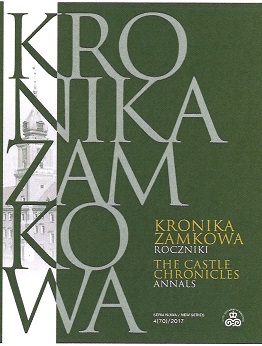Made in England. Anglomania w Warszawie czasów stanisławowskich (1764–1795).
Made in England. Anglomania in Warsaw in the reign of Stanislaw August Poniatowski (1764–1795).
Author(s): Magdalena BialicSubject(s): History, Fine Arts / Performing Arts, Cultural history, History of Art
Published by: Arx Regia® Wydawnictwo Zamku Królewskiego w Warszawie – Muzeum
Keywords: Anglomania; Anglophile; frock coat; beer; bunch; manège; tea
Summary/Abstract: Anglomania was one of the elements which helped to shape European culture from the 1770s onwards. The Polish-Lithuanian Commonwealth was fertile ground for the spread of this phenomenon thanks to King Stanisław August, who had travelled to Great Britain in his youth. The best example of this was apparent in Warsaw where there were famous English depositories, full of goods imported from the British Isles. Another manifestation of this trend was the tendency to wear English style outfits, which we can see in the paintings of Canaletto, Norblin and Vogel. People’s interest in England also resulted in the fashion for smallpox vaccinations, which was promoted by the king’s sister, Urszula Mniszech, née Zamoyska. It is also thanks to the English that horse-racing was introduced into Warsaw, the manège on Długa Street, the pleasure garden on Foksal and also the English breakfast with punch, beer, steak and black pudding. The decor of Warsaw residences and tenements also underwent changes. Furniture and upholstery in the French rococo style was replaced by socalled Adam-style mahogany furniture, Wedgwood porcelain and English prints on the walls. It also became fashionable to learn the English language. The English constitution was used as a model during the attempt to aid the recovery of the Polish-Lithuanian Commonwealth at the beginning of the nineteenth century.
Journal: Kronika Zamkowa. Roczniki
- Issue Year: 4/2017
- Issue No: 4
- Page Range: 209-242
- Page Count: 34
- Language: Polish

